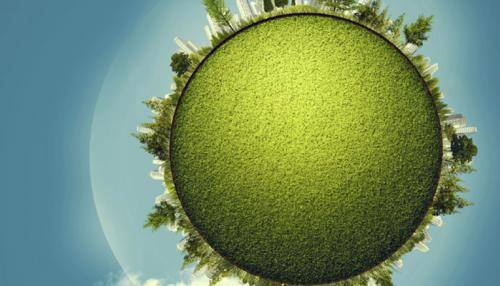- News>
- Environment
World Ozone Day: 30 years of healing the ozone together!

This massive `hole` in the ozone layer triggered panic leading to the signing of the Vienna Convention and the Montreal Protocol.
Ritu Singh
30 years ago in May 1985, the first ozone hole was discovered over Antartica. This massive “hole” in the ozone layer triggered panic leading to the signing of the Vienna Convention and the Montreal Protocol. Since 1994, 16th September has been celebrated as World Ozone Day to mark the date this deal was signed.
Also known as the International Day for the Preservation of the Ozone Layer, this day commemorates the Montreal Protocol that was signed by 24 UN member nations in 1987, to limit and ultimately phase out the production of man-made chemicals like chlorofluorocarbons (CFCs) and 95 other ozone-depleting materials.
Stratospheric ozone is constantly being destroyed by a group of manufactured chemicals, containing chlorine and bromine. These chemicals are called “ozone-depleting substances” (ODS). The main ODS include Hydrofluorocarbons (HCFCs),Halons (brominated fluorocarbons), Methyl Chloroform and Carbon Tetrachloride.
But, the picture is not that grim. Through concentrated global efforts, the world has succeeded in putting the stratospheric ozone layer on the road to recovery. There is still hope for our environment, but there is a long way ahead and much needs to be done!
What is Montreal Protocol?
The Montreal Protocol on Substances that Deplete the Ozone Layer is an international treaty designed to save the ozone layer by phasing out the production of numerous substances believed to be liable for ozone depletion. The treaty was signed on September 16, 1987, which entered into force on January 1, 1989. It is thought that if the international accord is adhered to, the ozone layer is expected to recover by 2050.
Theme for this year:
The slogan for this year “Ozone: All that is there between You and UV” is meant to show how human activity can impact the ozone layer and ultimately, the survival of the Earth and its environment as we know it.
Here's what the UN Secretary-General's message was for this day, ''As we look forward to the adoption of the 2030 Agenda for Sustainable Development, and the effort by governments later this year in Paris to forge a new, collective path forward on climate change, the Montreal Protocol’s success should inspire us. It shows what we are capable of when nations act together on a global challenge."
Why should you care?
Ozone plays a vital role in shielding life from the harmful ultraviolet light on Earth, its depletion can have major effects on human’s health and the surroundings as well.
The ozone layer is very important to humans and other organisms on Earth as it absorbs biologically harmful ultraviolet (UV) radiation coming from the sun. Effects of the ozone layer depletion by human activities on the planet could be disastrous.
The ozone depletion has led to the greenhouse effect which has resulted in global warming. The ultraviolet rays of the sun are cancerous and they can cause skin cancer.
Apart from cancer, some research shows that a shrink in ozone layer will raise rates of malaria, cataracts and other infectious diseases.
How to save the ozone?
The ozone layer can be saved only when we reduce the use of carbon. Here are some things which you should do:
- Reduce the use of fossil fuels and reduce the energy consumption at our homes
- Reduce/avoid using products which has chlorofluorocarbons (CFCs) like fresheners, aerosol hair sprays and cosmetics in plastic containers
- Plant more and more trees
- Use fertilizers that are environmental-friendly
- Perform regular maintenance of your vehicle to prevent excessive smoke emission which causes air pollution, and save on gasoline and crude oil
- Avoid burning of plastics and rubber tires
